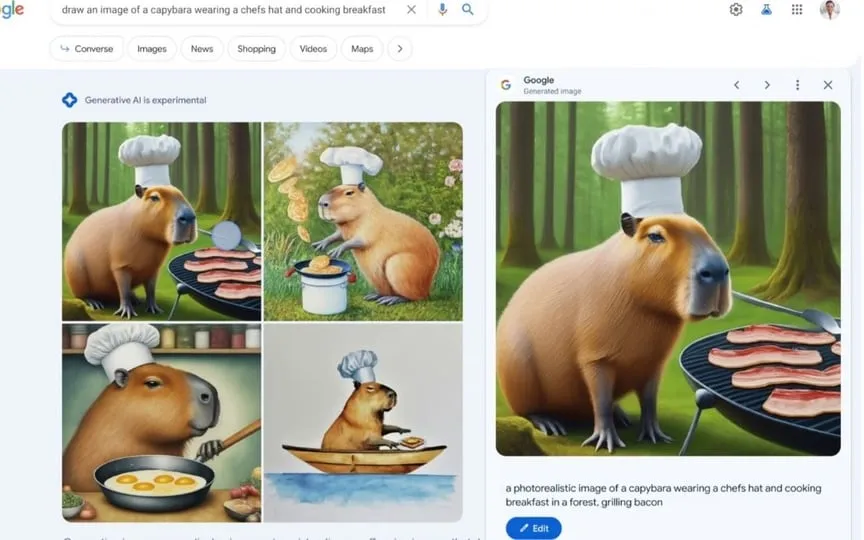Google Enhances Search with Generative Image Technology
Since the introduction of ChatGPT, the field of artificial intelligence (AI) has experienced significant advancements. Major tech giants like Google and Microsoft have introduced their own AI chatbots, and this technology has been incorporated into various services including Adobe Photoshop, Canva, and even basic web browsing. Recently, Google introduced generative AI search through Search Generative Experience (SGE), enabling users to quickly search and obtain results. Now, Google has revealed plans to introduce the capability of generating images using AI-powered SGE.
Google SGE update
In a blog post, Google announced that the new SGE will allow users to simply enter prompts such as “draw a picture of a capybara wearing a chef’s hat preparing breakfast,” and SGE will offer up to four AI-generated images. Tapping on the image will give you a description of what Google has created. You can add descriptions to edit the image or make it more detailed.
Google announced: “Maybe you want to see kapybarak make hash brown tones, or you want to add a light blue background with clouds. It’s an easy change!”
You can try these features by enabling the Search Generative Experience in Search Labs. You may then see an option to create AI-generated images directly in Google Image Search.
Over the past few months, there has been some controversy over AI-generated images. To combat this, Google has announced that every AI-generated image will have a metadata tag and an embedded watermark to indicate that it was created by AI.
Who can use this SGE feature?
Google has announced that the image creation feature is only available in English in the US for people who have taken the SGE exam and are 18 years of age or older.
Google’s About Image feature
Google also plans to introduce a new About This Image feature that will allow people to easily judge the context and credibility of images. It has details such as when the image and similar images were first indexed by Google, where it may have first appeared, and where else it has been seen online.




